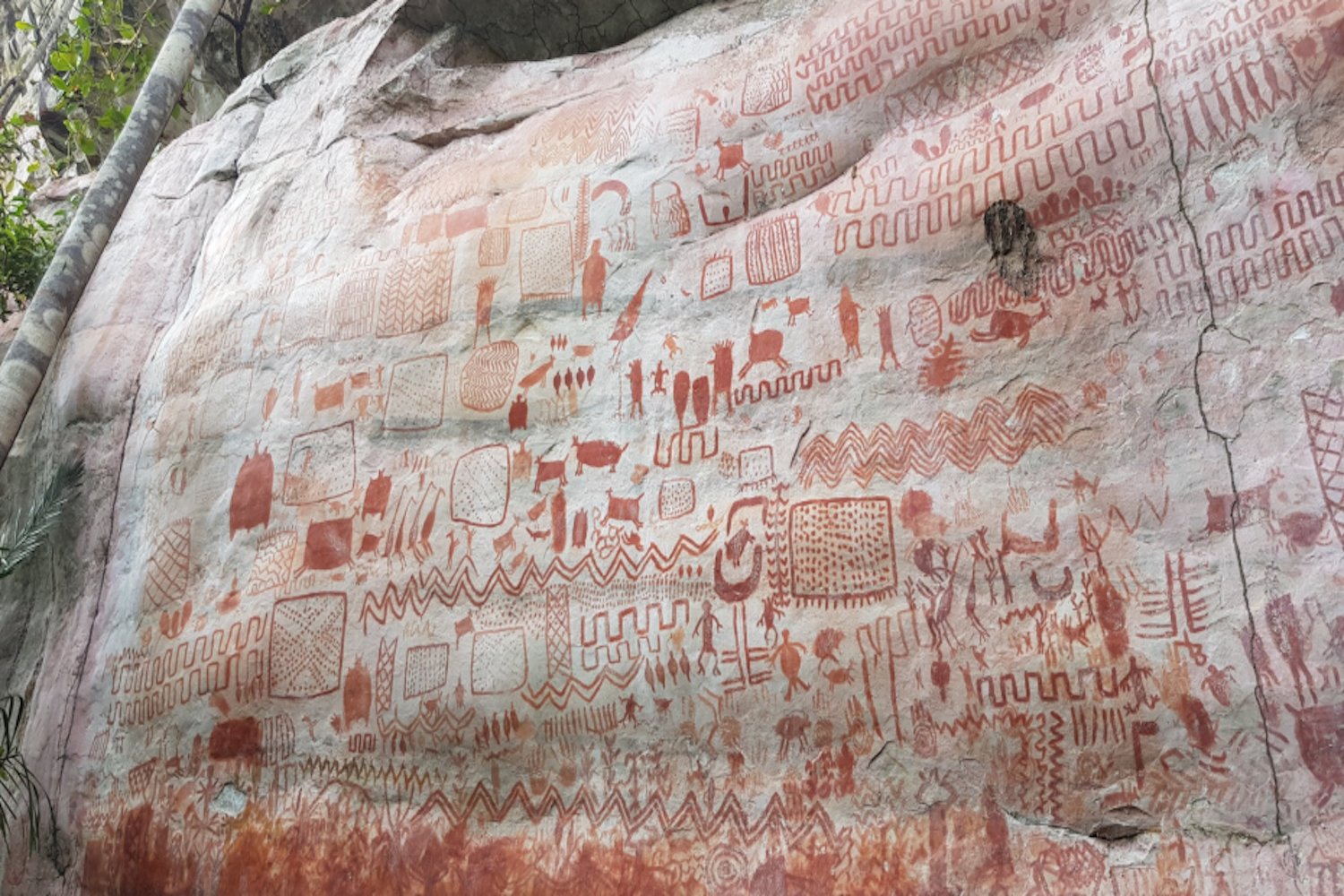Recently discovered prehistoric wall drawings illustrate a complex relationship between humans and animals deep in the Amazon rainforest, where creatures were treated simultaneously as a source of food and as a supernatural wonder.
The artwork was made using red ochre pigments on the rock walls of Cerro Azul, a hill located in Colombia’s portion of the Amazon. While the pictures have yet to be accurately dated, they have been made as far back as 10,500 BC, according to new research. The pictures include vivid depictions of deer, birds, lizards, turtles, and tapir, among other animals. In a study, researchers from the University of Exeter and several other schools examined samples of the drawings and compared them to remains found nearby.
Some animals, such as fish, were notable for how abundant they are in nature and in the found remains, but they rarely appeared in the rock art. Felines were also excluded from the imagery, despite some tribes in the area ascribing spiritual meaning to jaguars and other big cats.
Some of the art appears to show animal-human hybrids. While it’s uncertain exactly what meaning the artists were trying to express, “They certainly do offer greater nuance to our understanding of the power of myths in indigenous communities,” said Jose Iriarte, a professor at Exeter who worked on the study, in a statement. “They are particularly revealing when it comes to more cosmological aspects of Amazonian life, such as what is considered taboo, where power resides, and how negotiations with the supernatural were conducted.”
Scientific work in this region has been hindered by political unrest in Colombia. After a 2016 peace agreement between the government and the FARC militia, new archaeological missions began in the area, including the one that found the Cerro Azul artwork in 2017. The resulting research has shown that societies that lived in this part of the Amazon were mobile and relied on fishing, hunting, and gathering. But the paintings indicate the relationship between those people and the abundant fauna around them extended far beyond just sustenance, including seeing them as supernatural beings that were the subject of rituals.
“These rock art sites include the earliest evidence of humans in western Amazonia, dating back 12,500 years ago,” said Mark Robinson, an associate professor at Exeter. “As such, the art is an amazing insight into how these first settlers understood their place in the world and how they formed relationships with animals.”
In the study, the researchers warn against trying to ascribe modern worldviews to the creators, especially those that “downplay the sophisticated spiritually” of Indigenous groups. Instead, we should appreciate the ancient artwork for what it can teach us about societies that interpreted the relationship between humans and nature as reciprocal and interconnected.











Leave a Reply